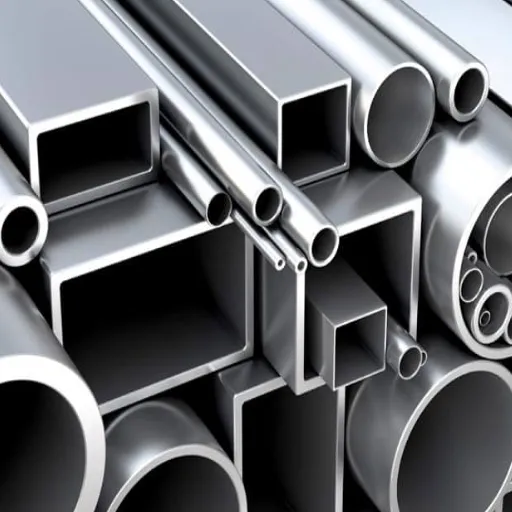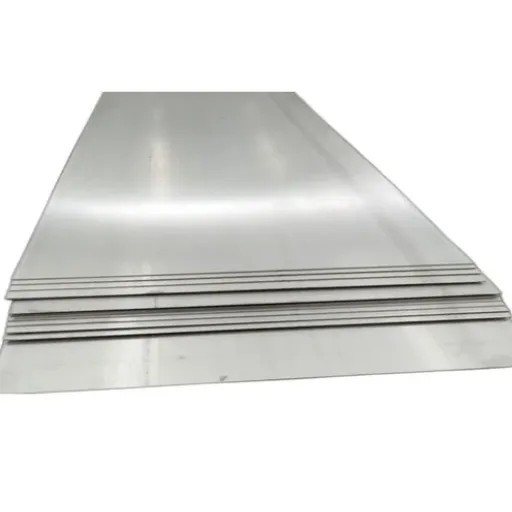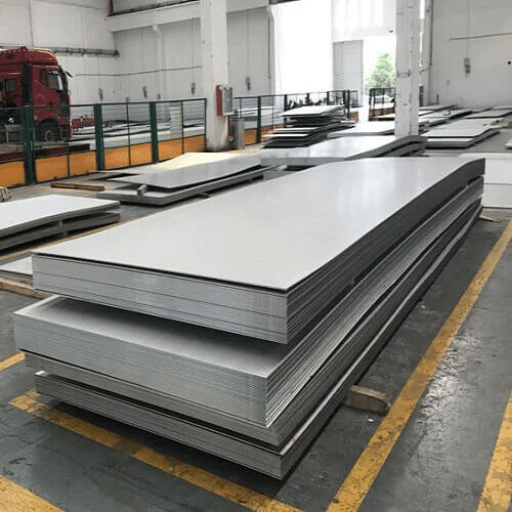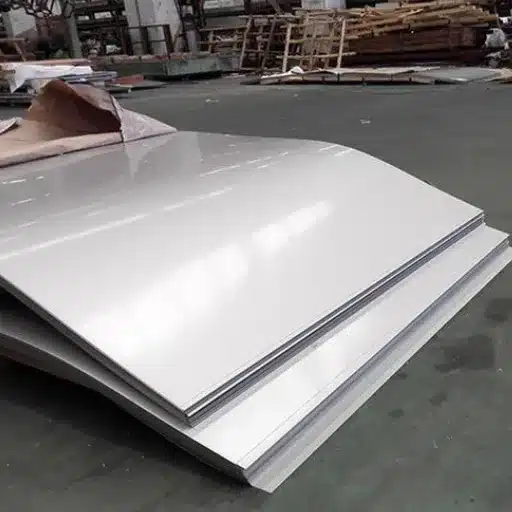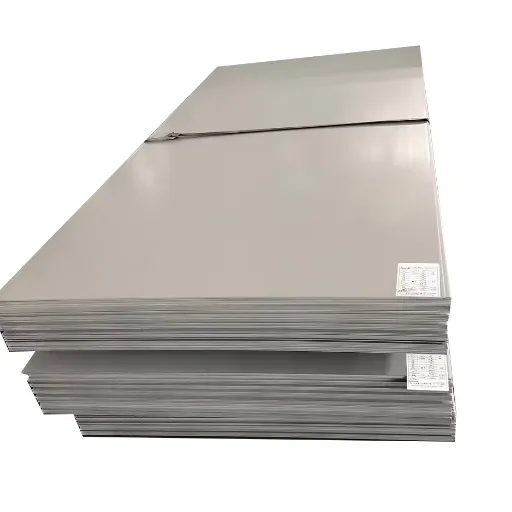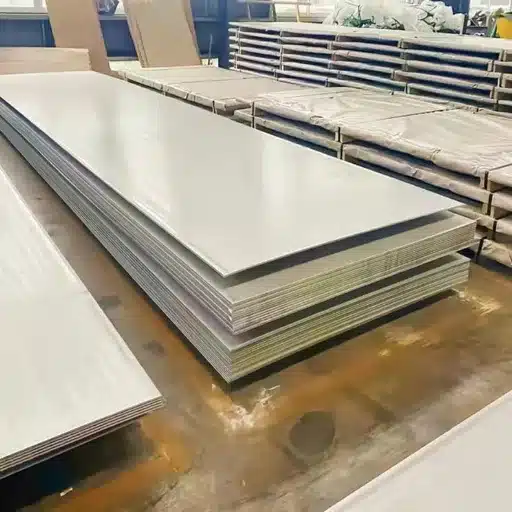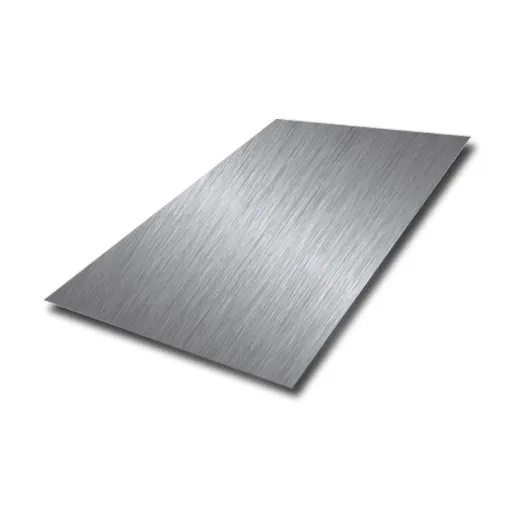Stainless Steel is an indispensable material for various industries, including construction, automotive, medical, and food processing. Nickel is one of the major ingredients that layered stainless steel’s durability and corrosion resistance. Nevertheless, how much nickel is there in stainless steel, and what are the reasons for its performance? The article goes into the science and engineering behind nickel’s involvement in stainless steel alloys. You will gradually understand its contributions to the structural integrity, resistance to extreme environments, and general versatility, and thus, appreciate why nickel is necessary in industrial applications. The extensive study will clarify the relationship between nickel and stainless steel, no matter if you’re an engineer, manufacturer, or merely interested in materials science.
Introduction to Stainless Steel
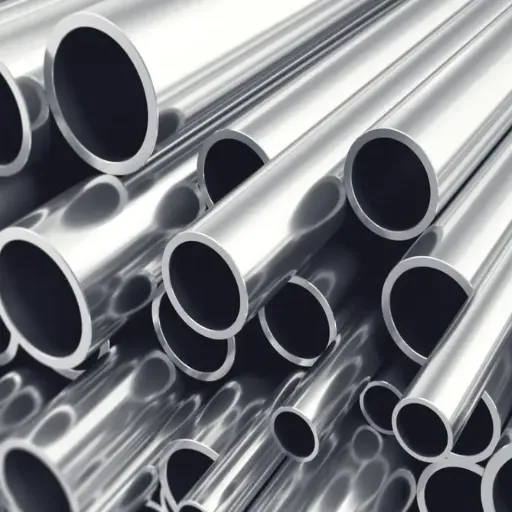
What is Stainless Steel?
Stainless steel is an alloy widely employed that mainly consists of iron, chromium, and other elements like nickel, manganese, and carbon, which vary according to the grade and the application of the alloy. The most important trait of stainless steel is its outstanding corrosion resistance, which is created using a minimum of 10.5% chromium by weight in the alloy. The chromium reacts with the oxygen to produce a very thin, stable oxide layer, called the passive layer, on the steel surface, which prevents the steel from oxidation and hence, the steel is protected from rusting.
The excellent properties that this alloy has such as high strength, durability, and low maintenance requirements make it very important in various industries. It is used in a lot of areas and applications like construction, manufacturing, transportation, and even medical due to its versatile nature. Besides, stainless steel is also capable of withstanding high and low temperatures, which makes it appropriate for operations requiring both structural integrity and heat or cold resistance simultaneously.
There’re various forms of stainless steel, which can be put into five categories according to their composition: austenitic, ferritic, martensitic, duplex, and precipitation-hardening grades, with each being designed for specific applications. For example, austenitic stainless steel that usually contains nickel is appreciated for its superb corrosion resistance and good plasticity. The ability of stainless steel to adapt to different conditions explains its wide usage and acceptance in a variety of engineering and industrial sectors.
Importance of Alloy Composition
The stainless steel alloy composition wears out all its mechanical properties, corrosion resistance, and specific applications. Steel makers can perform the material’s performance to suit needs, for example, the function of each key element such as chromium, nickel, molybdenum, and nitrogen by the ratio’s adjusting. The passive oxide layer, built with the help of chromium, prevents oxidation and rust, so the steel is not that easily ruined. On the other hand, nickel gives the steel more flexibility and at the same time makes it less susceptible to corrosion, especially where the chloride content is high. The presence of molybdenum also contributes to the development of pits and crevices resistance, which is very important in marine or chemical processing applications. Nitrogen, with its small dosage, adds to the strength of the material while at the same time it makes it less susceptible to localized corrosion.
In the course of time, metallurgical engineering has made it possible to create especially stainless steel grades with utmost resistance that can withstand extreme conditions like high temperatures or highly acidic environments, for example. The duplex stainless steels, comprising austenitic and ferritic structures, give better strength and stress-corrosion cracking resistance, thus, they are suitable for offshore oil and gas applications. Precipitation-hardening grades, in contrast, claim their fabulous tensile strength by heat treatment that is done carefully and that is why such materials are used in aerospace and high-performance industries where reliability is a must.
Only by understanding and taking the role of each alloying element precisely will ensure the reliability of the material and give support to innovations in critical sectors. Engineers predict the behavior of the material under specific conditions by means of analytical techniques like spectroscopy and advanced modeling, which in fact allow the development of tailored solutions that will last longer and be more cost-efficient at the same time.
Common Applications of Stainless Steel
Stainless steel is an all-purpose metal that can be found in a lot of different industries because of its remarkable resistance to rust, longevity, and strength. Below are the five most common uses of stainless steel:
1. Construction and Architecture
The construction industry is one of the primary users of stainless steel, which is mainly credited to the material’s strengths that are such as resistance to environmental factors and high strength-to-weight ratio three times. Type 316 stainless steel is the perfect thermoplastic for coastal and rear high-humidity zones, as it is not only very strong but also extremely resistant to chloride corrosion. It is believed that about 20% of all modern architectural projects’ metal usage comes from stainless steel, according to the industry.
2. Medical and Healthcare Equipment
Stainless steel is the most commonly used material that is highly resistant to reactions and thus hygiene for surgical instruments, implants, and hospital equipment. The grades of 304 and 316L are most popular because they are biocompatible and easy to sterilize. A survey of the medical sector reveals that stainless steel alloys are used in more than 70% of surgical tools.
3. Automotive and Transportation
Stainless steel is a must in the automotive industry for exhausts, trims, and structural parts where the need for durability and resistance to corrosion is there. This material not only lowers the cost of long-term maintenance but also enhances safety and efficiency. For instance, ferritic stainless steels such as Grade 409, which is a heat-resistant grade, are commonly used in exhaust systems. A 2023 market report said there was a 15% rise in stainless steel usage in automotive over the last decade.
4. Food and Beverage Processing
Stainless steel is the food and beverage sector’s metal of choice for processing equipment, storage tanks, and kitchenware because it is non-toxic, corrosion-resistant, and easy to clean. The 304 and 316 grades are the most widely used in this segment, with the latter one preferred in environments that are acidic and salty. According to research, approximately 30% of global stainless steel production is accounted for by the food-grade one every year.
5. Energy and Power Generation
Stainless steel is a major player in power generation, especially in renewable energy such as geothermal, solar, and wind. Stainless steel is often used in heat exchangers, boiler tubes, and reactor vessels due to its ability to endure high temperatures and pressures. For example, martensitic stainless steels are employed in turbine blades because of their toughness and ability to withstand high temperatures.
All the applications listed above reflect that stainless steel is capable of adapting to and meeting specific industrial requirements while at the same time offering reliability and long-term value.
The Role of Nickel in Stainless Steel
How Nickel Contributes to Stainless Steel Properties
Nickel is the main element that modifies both the chemical and mechanical qualities of stainless steel in the austenitic category, which is the one most commonly used. Nickel provides the same FCC crystal structure of the alloy with high strength and ductility even at cryogenic temperatures. This trait of austenitic stainless steels gives them wide ranges of applications and makes them suitable for extreme environmental conditions. Corrosion resistance is another significantly enhanced property of nickel, particularly in cases of acidic and chloride environments, since it helps in the formation of a strong passive oxide layer over the steel that is resistant to corrosion.
Nickel, as a contributor for the material, helps in work hardening which enables stainless steel to keep its desirable balance of forming and toughness during the manufacturing processes. The grades like 304 and 316, which contain 8-10.5% and 10-14% nickel, are examples of its value, which provide a high-performance alloy for applications such as medical devices and chemical storage tanks. Nickel also increases thermal expansion coefficients and resistance to thermal cycling, which are both essential for applications in aerospace and power generation industries.
The above-mentioned properties make it clear that not only is nickel an important factor in stainless steel performance, but also it is a contributing factor to the prevention of corrosion and extending the reliability of stainless steel in extreme or corrosive environments.
Nickel Content in Common Stainless Steel Grades
Stainless steel grades differ from one another considerably in nickel content, which also determines differently for each of them mechanical properties, resistance to corrosion, and the areas in which they can be used. For example, austenitic steels, in which the 304 and 316 grades are the most common, to name a few, usually have 8-12% of nickel. In this way, the quite high amounts of nickel present in them not only guarantee great ductility but also allow excellent forming and resistance to saline areas and high temperatures, thus making them suitable for marine, industrial, and chemical processing industry applications.
Ferritic steels, on the contrary, are normally nickel-free or contain very minor amounts of it and their resistance to corrosion comes from the presence of chromium (10.5-18%). The lack of nickel in ferritic grades such as 409 and 430 renders them more cost-efficient, but at the same time, they may suffer from less ductility and toughness compared to austenitic grades.
Specialty grades, as in the case of duplex steels, strive improving performance through the use of nickel and chromium and molybdenum combinations in exact ratios. For instance, duplex grades may contain nickel 1-8% and the presence of this level of nickel only increases pitting resistance and even stress corrosion cracking in aggressive environments.
The alloy composition, especially the nickel content, is the main reason for deciding upon both the performance and cost-effectiveness of stainless steel in practical applications. Full reliance on the very exact alloy formulations designed around their operational needs is, in fact, one of the factors ensuring that the material performance will be in accordance with the environmental and mechanical demands of their specific use case.
Impact of Nickel on Corrosion Resistance
Nickel has a major part in the creation of austenitic microstructures consisting of iron and nickel which in turn lead to the extinction of all corrosive environments. The alloy materials the nickel presence especially helps in resisting localized and uniform corrosion the most significant case being nickel act at both the anode and cathode places thus preventing the corrosion process. Presented below are five important effects of nickel on corrosion resistance:
- 1
Improved Pitting Resistance
Stainless steel with a high nickel content shows a great deal of resistance to the pitting corrosion which is provoked by the presence of chloride ions in the surroundings. It has been shown that stainless steel containing 10-14% of nickel has a much lower tendency to pitting and is hence less affected by it than alloys of lower nickel content during salt spray testing.
- 2
Enhanced Stress Corrosion Cracking Resistance
Stainless steel grades with 8-12% nickel found in the austenitic structure are reported to possess excellent SCC resistance when subjected to tensile stress in high-temperature chloride-containing environments like those in the oil and gas industry.
- 3
Resistance in Acidic Environments
Nickel supports the development of the passive oxide layer on stainless steel, thus the material becomes more resistant to sulfuric and phosphoric acid attack. Alloys with 25% nickel, for example, Alloy 904L, have been found to reduce the acid corrosion rate by up to 50% compared to standard grades such as 304.
- 4
Weldability and Corrosion Stability
Nickel-containing stainless steel does not lose its excellent corrosion properties even in welded areas. For instance, the 316L grade, which contains 10-14% nickel, inhibits intergranular corrosion in the heat-affected zones of welding, thus maintaining the integrity of the structure even in long-term applications.
- 5
General Uniform Corrosion Resistance
Nickel functions as a general booster to the resistance against uniform corrosion in water environments. Researches have shown that the 310 and 625 alloys, which are high nickel containing, have very good performance in seawater and condensed air for long periods of time.
These impacts underscore the necessity of precise nickel composition in stainless steel formulations to meet diverse industry requirements, from chemical processing to marine applications.
Stainless Steel Grades and Nickel Content
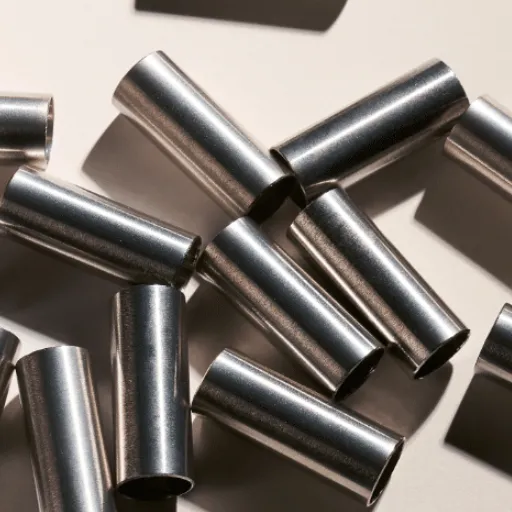
304 Stainless Steel and Nickel Levels
304 stainless steel is one of the most widespread austenitic stainless steel grades, mainly due to its good composition and varied performance. The nickel in 304 stainless steel usually has a content in the range of 8% to 10.5%, which is determined by the exact manufacturing requirements and the international standards ASTM A240, EN 10088. Nickel is a vital element for this grade of steel that, by stabilizing the austenitic structure, brings about great improvement in ductility, toughness, and imperviousness to corrosion in different surroundings, thus making 304 stainless steel extraordinary in places where the same-be means of cutting tools and machines, and where both durability and precision are essential.
Moreover, the addition of nickel to 304 stainless steel is a key factor in its improvement of corrosion resistance, especially in oxidizing atmospheres. The material’s performance in lightly acidic and chloride-containing conditions is well-established; hence, it can be safely used in a variety of applications, such as food processing equipment, chemical storage tanks, and architecture subjected to weather conditions. The presence of nickel facilitates the development of a passive oxide layer, which acts as a shield over the steel surface and hence lowers the risk of one type of corrosion called general corrosion. But since the nickel concentration is not so high as in the case of 316, there might be other factors to take into consideration if the steel is to be used in highly aggressive industrial or marine environments.
New metallurgical processes and research done in this field highlight the interaction between levels of nickel and performance of the material. For example, the metal industry has come a long way whereby it can now control more precisely the fraction of nickel to be added such that each of the factors performance, material cost, and sustainability is equally catered for. This has become more and more crucial for the industries that want to optimize their production while being compliant with the stringent ecologic regulations. The combination of the versatility of 304 stainless steel and the accurately gauged nickel content grants it a worldwide presence as a primary material in the engineering and manufacturing sectors.
316 Stainless Steel: Composition and Properties
316 stainless steel is an alloy made up of austenitic steel and regarded for its improved resistance to rust, hence it is used in extreme environment settings. The chemical formula of this alloy generally contains about 16 to 18% chromium, 10 to 14% nickel, and 2 to 3% molybdenum, while the rest is iron with very little manganese, phosphorus, silicon, and carbon. Molybdenum is the major element in 316 stainless steel, and its presence prevents the formation of pits and crevices in the material that can corrode the alloy, especially in places where the chloride levels are high like the seaside or during chemical processes in industries.
The most important and noticeable characteristic of 316 stainless steel is its high tensile strength, which is usually between 515 and 620 MPa, and also its great elongation of about 40% in the case of annealed materials. The combination of strength and ductility allows the metal to be easily worked, welded, and machined for complex industrial processes. Besides, the alloy can withstand high thermal resistance thus it can be used in the application of heat exchangers, boilers, and chemical process equipment, as 316 stainless steel would not lose its integrity even under continuous exposure to high temperatures.
Because of its remarkable characteristics, 316 stainless steel is a material that is widely used in industries where performance is an important factor. In other words, it is a standard material for pharmaceutical and food processing equipment where it acts as a barrier for contamination due to its easy cleaning and resistance to strong sanitizing agents. Moreover, the alloy is employed in such diverse fields as medical implants, oil and gas industries, and even the construction of buildings in coastal areas. The combination of its chemical makeup and its physical qualities points out the adaptability of 316 stainless steel to satisfy both performance and regulatory requirements across different industries.
Variations in Nickel Content: 200 Series vs 300 Series
The composition of 200 stainless steel is that it has less nickel (2-4%) and more manganese/nitrogen, which makes it cheaper but less resistant to corrosion, while 300 series has more nickel (up to 10%) and chromium, which provides excellent corrosion resistance and weldability.
| Aspect | 200 Series | 300 Series |
|---|---|---|
| Nickel (%) | 2-4 | Up to 10 |
| Manganese | Elevated | Minimal |
| Chromium (%) | ~16 | ~18 |
| Durability | Moderate | High |
| Expense | Lower | Higher |
| Joining Ease | Difficult | Easy |
| Usage | Basic | Demanding |
Effects of Nickel on Stainless Steel Properties
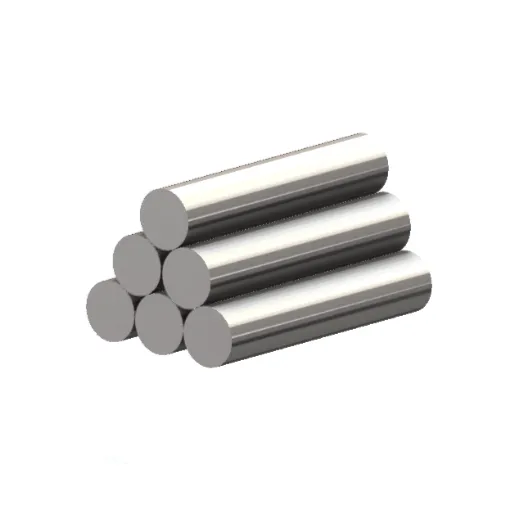
Corrosion Resistance: Pitting and Crevice Corrosion
Pitting and crevice corrosion are two localized types of corrosion that severely impact the integrity and performance of stainless steel in extreme conditions. Pitting corrosion mainly starts where the passive films are broken, and these areas are usually exposed to chlorides or halide ions. The small pits formed as a result can eventually grow, thus the material’s structural strength will be undermined and failure will occur if nothing is done. In the same way, crevice corrosion is taking place in confined spaces, for instance, under gaskets, washers, or seams where the access of oxygen to the material surface is limited. This oxygen-poor environment weakens the passive film, which is supposed to protect against corrosion, and corrosion continues to spread slowly.
The propensity of stainless steel for both pitting and crevice corrosion is heavily dependent on its alloy composition. The presence of molybdenum in high amounts, such as in grade 316 and 317 stainless steels, reinforces the resistance to these localized types of degradation, making them ideal for marine and chloride-laden environments. The critical pitting temperature (CPT) and critical crevice corrosion temperature (CCT) are usually adopted as the indicators to express the resistance of a material in those conditions. The ASTM G48 standard, among others, is widely used to evaluate these characteristics under controlled laboratory conditions.
The ongoing progress in material science and manufacturing techniques is always on the side of stainless steel grades as they get more and more resistant to pitting and crevice corrosion. One typical case is duplex stainless steels that have an austenite to ferrite ratio that results in superior resistance to corrosion than the austenitic grades. Such developments are necessary for high-performance materials in industries like desalination plants, chemical processing, and offshore oil drilling, which will then benefit from long-term durability and compliance with safety standards.
Ductility and Durability of Nickel-Containing Stainless Steel
The nickel-containing stainless steel quality is not only the best, but also the most important because of its good ductility and incredible durability, among other properties. When nickel is added, the steel gets bigger, thus making it easier for the manufacturer to use it in production processes such as deep drawing, rolling, and forming. The ductility makes it possible that the components do not lose their strength even when subjected to large strains thus, avoiding the splitting or the breaking of the material during the manufacturing process.
Besides, nickel is one of the leading contributors to the material’s longevity since its consumption is so little thanks to the resistant qualities of the material to fatigue and impact even in very high operational periods. The use of nickel-bearing stainless steel is, therefore, ‘themselves’ in places with heavy machine loads or dynamic stresses, e.g., chemical reactors, pressure vessels, or structural frameworks. The results from the last metallurgical study indicate that nickel additions give the austenitic phase more stability; this, in turn, leads to better overall toughness, especially in cold conditions.
Together with its resistance properties, nickel-containing stainless steel guarantees that even the most demanding sectors such as energy generation, transport, and construction will not be affected by corrosion. Its high performance throughout the years in tough or changing working conditions has earned it the title of the most economical choice among the applications that require such reliability. The continuous improvement of alloy design maintains its place at the top of the minefield of both mechanical and chemical properties that are present in the present and the upcoming engineering challenges.
High Temperature Applications
Nickel-bearing stainless steel is the best choice for the extreme hot applications because of its outstanding heat resistance, plus the maintaining of good strength and the oxidisation resistance at high temperatures. The properties above listed make it a critical material for the industry and engineering applications where thermal stress is a big factor. A comprehensive list of applications has been prepared below which shows the different areas of stainless steel with nickel being the main alloying element working at their best:
Gas Turbines
Nickel-containing alloys are used in gas turbines for making parts like the combustion chambers, turbine blades, and jet engine parts, where the temperature might go up to 1,500°F (815°C) and even more.
Industrial Furnaces
Stainless steel with nickel is used in the furnace components such as heat-exchangers, conveyor belts, and retorts. This allows the reliable operation at the temperature of 2,000°F (1,093°C).
Petrochemical Industry Equipment
Nickel alloys from the reactor vessels to heat transfer pipelines are giving the required durability and resistance to high temperatures and corrosive environments in processing petrochemicals where the plants are located.
Power Generation Boilers
The advanced boiler systems in power plants are making use of nickel-rich alloys to survive under conditions of high-pressure and high-temperature, thus improving efficiency and lifespan.
Heat Treating Equipment
The presence of nickel in the steel is an absolute necessity for the making of heat-treating equipment like annealing trays, grates, and fixtures, as well as for the guaranteeing of no cracking and no deformation during the repeated heat cycles.
Besides the application areas, nickel-containing stainless steels are the most important materials in the industries for their properties of the highest performance even under extreme hot exposure. The data has indicated that these alloys not only keep their mechanical integrity but also resist scaling even at higher temperatures, thus guaranteeing their durability and efficiency over a long period of operation.
Industries Using Nickel-Containing Stainless Steel
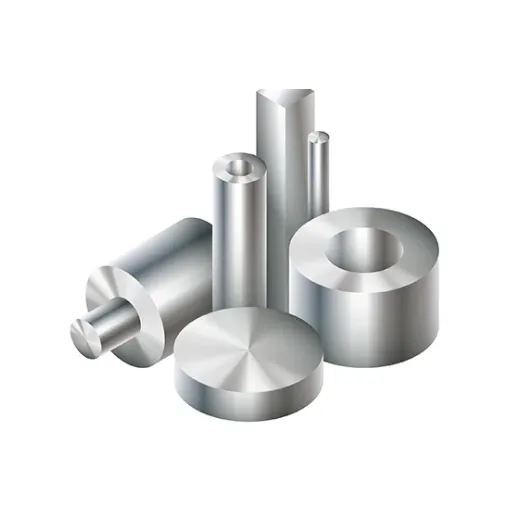
Common Applications in Various Industries
Stainless steel with nickel content is a must-have material for many industries, thanks to its resistance to extreme conditions and its long-term durability. The most significant application is in the chemical and petrochemical industries that use this alloy for their reactors, heat exchangers, and piping systems. Such equipment needs high resistance to corrosion caused by acids, alkalis, and other aggressive chemicals. Likewise, the energy sector, mainly power and nuclear plants, has the same use for nickel-containing alloys as in the case of steam generators and turbine parts where high-temperature strength and resistance to oxidation are the main requirements.
The food and beverage industry is one of the sectors that greatly benefits from the non-reactive and hygienic properties of stainless steel. It is the only material that is used to make processing equipment, storage tanks, and transportation systems that guarantee product purity and compliance with health standards. Also, in the construction industry, nickel-containing stainless steel is a very popular material for architectural structures, bridges, and cladding due to its attractiveness and capability to withstand environmental attacks like humidity and pollution.
Additionally, the aerospace and automotive industries have a close relationship with nickel alloys for making components like exhaust systems, fuel lines, and high-performance engines, where the finest quality in thermal stress resistance and precise mechanical performance is required. All in all, the ability of nickel-containing stainless steel to serve in many different roles is due to its strong physical and chemical properties, which make it suitable for a wide range of industrial applications.
Examples of Stainless Steel Products
Kitchenware and Cutlery
Among kitchen utensils, stainless steel has the widest application, and it is of most use in making pots, pans, ovens, and cutlery. The grades 304 stainless steel and 316 stainless steel are particularly chose because of their corrosion resistance, ease of cleaning and non-reactivity with food, thus providing hygienic cooking surfaces. 316 stainless steel, with its superior resistance to harsh chemicals and salt exposure, is often used for professional-grade equipment.
Construction Materials
The use of stainless steel can be found in architectural constructions most of the time in such forms as cladding, roofing, and structural supports. Its durability against extreme weather and its modern look make it a key factor in the design of buildings and structures including bridges and even skyscrapers. It is common to use high-strength duplex or ferritic grades in such applications to achieve both cost and performance optimization.
Medical Instruments and Devices
Surgical instruments, implants made of orthopedic screws and plates, and medical equipment are among the numerous applications to which stainless steel has been extensively applied in the medical sector, thanks to its biocompatibility and ability to bear sterilization processes. The 316L stainless steel is the most incorruptible grade of steel in this field due to its low carbon content which also lowers corrosion in the living environment.
Energy Sector Equipment
Nuclear and renewable energy power stations, among others, use stainless steel in turbines, heat exchangers, and pumping systems. The ability to resist very high temperatures and pressure is one of the reasons the material is used in such areas that are so critical to the efficiency and safety in the operations.
Automotive and Transportation Parts
The use of stainless steel in automotive parts like exhausts, fuel tanks, and body panels is mainly because of the need for strength, environmental resistance, and lower operating costs. Advanced grades such as high-strength martensitic stainless steel are being used to make parts that are lighter and still strong without sacrificing safety.
Food and Beverage Processing
The dairy, brewing, and food manufacturing industries among others rely on the use of stainless-steel processing equipment including tanks, mixers, and conveyors. The non-porous surface of stainless steel not only prevents contamination but also guarantees that the very strict hygiene rules are being complied with.
The above-mentioned application areas of stainless steel bring out its capacity to fulfill the hard demands of the customer to the highest level, supported by its flexibility and long-lasting performance. The use of stainless steel in various sectors is still growing due to the fact that technological innovations are continuing to improve its features in terms of functionality and environmentally-friendliness.
Future Trends in Nickel Use in Stainless Steel
In my opinion, the future of nickel usage in stainless steel making is directly parallel to the cutting-edge technologies and innovations in material that are sustainable. Nickel is still a key player in the lining up of stainless steel through the very important properties of corrosion resistance, durability, and easy shaping. Still, the industries are putting the greatest weight on the carbon footprints of the processes that are going to be the hardest to change. The emphasis is on developing ways of recycling nickel that are very efficient. That is why they are gradually getting rid of the requirement to take resources out of the earth and comply with regulations that protect the environment as their main concern.
Moreover, the ever-increasing demand for stainless steel from the energy and transport sectors will be the major factor determining the extent of nickel use. Take, for instance, windmills at sea or hydrogen tanks that need super stainless steel, where nickel is the main player in making them. At the same time, researchers are working on the development of new alloys in such a way that the amount of nickel in steel is lessened to the point of the cost-performance balance being just right, while still keeping the property of strength and resillience in tough conditions of a wide range of industries.
Finally, the opening up of new nickel sources and the purchasing of secondary raw materials are likely to come to the forefront. The launch of technology-based recycling projects and progress in nickel extraction methods serves to demonstrate the commitment of the industry to the circular economy movement. I very much think that these combined actions not only highlight the indispensable nature of nickel in the manufacture of stainless steel but also the establishment of a more sustainable and resource-efficient future.
References
- Nickel Institute: This site provides detailed insights into the role of nickel in stainless steel, including specific grades like Type 304 (8% nickel) and Type 316 (11% nickel).
- SS Alloy Steel Blog: This blog explains the nickel content in various types of stainless steel, particularly austenitic stainless steels, which typically contain 8% to 14% nickel.
- Malin Co.: This source discusses the range of nickel content in stainless steel, varying from as low as 1% to as high as 30%, depending on the grade.
Frequently Asked Questions (FAQ)
Q: How much nickel is in type 304 stainless steel?
A: Type 304 stainless steel typically contains about 8% nickel. This higher nickel content contributes to its excellent corrosion resistance and makes it one of the most widely used grades of stainless steel.
Q: What is the nickel content in type 316 stainless steel compared to type 304?
A: Type 316 stainless steel contains approximately 10% to 14% nickel, which is slightly higher than the nickel content in type 304. This elevated nickel content enhances its ability to withstand corrosive environments, particularly in marine applications.
Q: Why is nickel important in the composition of stainless steel?
A: Nickel plays a crucial role in the composition of stainless steel by stabilizing the austenitic structure. This results in improved ductility, toughness, and corrosion resistance, making nickel a vital element in most common austenitic stainless steels.
Q: Are there nickel-free stainless steel options available?
A: Yes, there are nickel-free stainless steel options, such as some grades of 200 series stainless steels. These alternatives have little or no nickel and are often used to accommodate those with nickel allergies.
Q: How does the chromium content affect the nickel requirement in stainless steel?
A: Chromium content enhances the corrosion resistance of stainless steel. In some cases, a higher chromium content can reduce the need for nickel, especially in low nickel content grades, as the chromium helps to form a passive layer that protects the steel.
Q: What are the differences between 300 series stainless steels and 200 series stainless steels in terms of nickel?
A: 300 series stainless steels, such as 304 and 316, typically have higher nickel content, while 200 series stainless steels have lower nickel levels, sometimes using manganese as a substitute. This difference affects their corrosion resistance and mechanical properties.
Q: How does the value of nickel influence stainless steel production?
A: The value of nickel has a significant impact on stainless steel production costs. As global nickel prices fluctuate, manufacturers may adjust the nickel content in their stainless steel products, opting for lower nickel alternatives when prices are high.
Q: What types of stainless steel may contain a small amount of nickel?
A: Certain grades of low nickel stainless steel, such as those in the 200 series, may contain a small amount of nickel. These grades are designed for specific applications where low nickel content is preferable, especially for cost reduction or for individuals with nickel allergies.
Q: How does the nickel institute contribute to the understanding of nickel in stainless steel?
A: The Nickel Institute provides valuable resources and research on the role of nickel in stainless steel. They promote awareness of nickel’s benefits and applications, helping industries understand how much nickel in stainless steel affects performance and safety.
Q: What are the families of stainless steel and how do they relate to nickel content?
A: The families of stainless steel include austenitic, ferritic, and martensitic types. Austenitic stainless steels, such as 300 series, typically have higher nickel content, while ferritic types generally have lower nickel levels. Understanding these families helps users select the right type of stainless steel for their needs.

